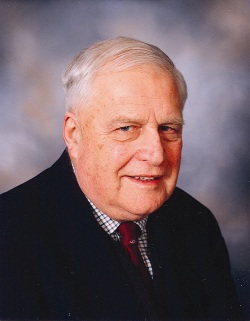 Joe McCall heralds a major advance in our understanding of Edicara.
Joe McCall heralds a major advance in our understanding of Edicara.
Geoscientist 19.5 May 2009
Edmund Gosse’s naturalist father Philip stated: “the world was created complete with fossils to try our faith”. The enigma of Ediacara certainly presents us with complexity and obscurity - much of which has long proved difficult to fit with evolutionary theory. Whereas some Ediacara are clearly progenitors of Phanerozoic phyla, others are simply baffling. Brasier and Antcliffe2 have now published an article that represents a great advance, including an attempted phylogeny of some of the most obscure Ediacara organisms.
The authors emphasise the original discovery status of the Charnwood Forest organisms. These British discoveries were not actually the first to be described: Billlings’s Aspidella from Newfoundland was first; but created scarcely a ripple on the palaeontological pond. Range and Schneiderhohn described Rangea and Pteridinium from Namibia from 1908 onwards. However, the Charnwood find by Roger Mason in 1958, and the Ediacara finds of Sprigg in 1946, really set the revolution in motion.
The authors have wisely avoided becoming mired in a discussion of biological relationships. They commence by analysing the morphology of the enigmatic leaf-like holotypes of Charnia, Charniodiscus and Bradgatia, all three from Charnwood Forest, using high-definition laser mapping. (The laser method produces a highly detailed digital surface map of the fossil and this can be manipulated to show the structure in there dimensions. It also preserves a record of highly vulnerable fossil surfaces that can be studied, using computers, by future scientists.) The authors then discuss their possible interrelationship and evolution.
They recognise three critically important leaf-like ‘rangeomorph’ elements: a) not furled, displayed; b) furled, displayed; and c) furled, undisplayed. They then extend their comparisons to Ivesheadia, found in Charnwood and Newfoundland, Beothukis, found in Newfoundland, and Fructofusis, found in Newfoundland. They produce a phylogenetic diagram, showing possible relationships between the eight main taxa. This diagram depends of the assumption that Ivesheadia is the most primitive.
This is the first such diagram to be attempted for the Petalonomae Ediacarian fossils, as far as I know. It seems like a giant leap forward - will similar attempts be made on other Ediacaran forms such as the medusoids? Will such analysis using remarkable laser techniques be able to resolve the fundamental question of whether the most obscure Ediacaran fossils represent a biological dead end (as Seilacher has suggested), and tell us exactly how these strange leaf-like and sack-like animals lived?
Refs
- McCall, G.J.H. 2006. The Vendian (Ediacaran) in the geological record: Enigmas in geology’s prelude to the Cambrian explosion. Earth Science Reviews 77; 1-229.
- Brasier, M.D., Antcliffe, J.B. 2009. Evolutionary relationships within the Avalonian
- Ediacara biota. Journal of the Geological Society 166(2); 363- 384.
- McCall, G.J.H 2009. Eight-armed Ediacara. Geoscientist 19(3); 8